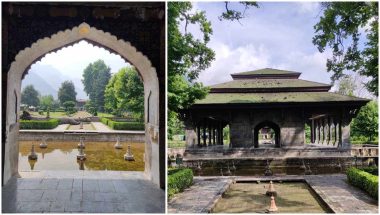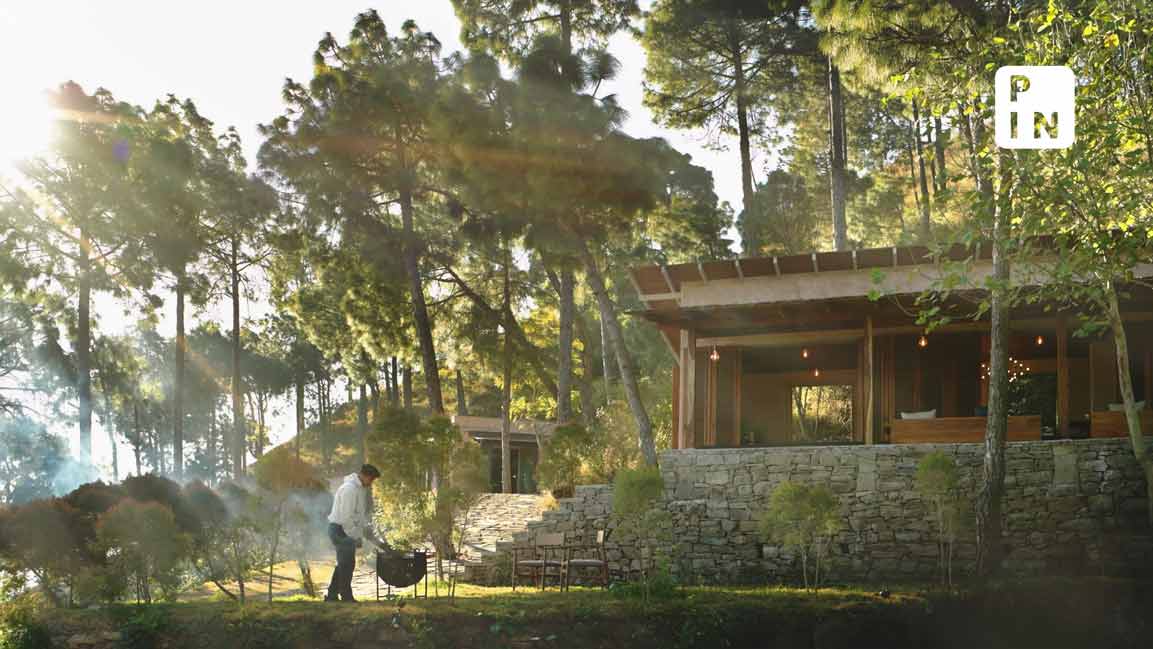- | 4:39 pm
The case for UNESCO recognition to Kashmir’s Mughal Gardens
The Mughal Gardens have been a major tourist attraction and experts believe that the UNESCO World Heritage tag would revive the local tourism industry

The hosting of the third G20 Tourism Working Group Meeting in Srinagar earlier this year sparked optimism of a likely boost in investments in Kashmir’s tourism sector. Despite some local resistance and subdued international criticism, the summit portrayed the image of a peaceful and picturesque region.
Syed Abid Rasheed, secretary of tourism and culture in Jammu and Kashmir, says holding the summit in Kashmir turned out to be a major opportunity to showcase a region that is heavily reliant on its natural-cultural heritage, and paved the way for long-term peace. The relationship between tourism and peace, however, is complex.
”While conflict can undermine or even promote tourism, hosting events and festivals in former conflict zones doesn’t necessarily guarantee peace,” says Stefanie Kappler, a professor of conflict resolution and peacebuilding at Durham University in England. “It’s probably difficult to discern a simple, linear relationship between events (or tourism) and peace.”
Saima Iqbal, principal conservation architect with the Kashmir chapter of the Indian National Trust for Art and Cultural Heritage (INTACH), says, “While G20 may have certainly helped in Kashmir’s image-building and given prospective investors a first-hand glimpse into the tourism industry’s potential, an action plan may be required to capitalize on the successful G20 meet in Kashmir.
One vital step to enhance Kashmir’s tourism potential could be nominating the Mughal Gardens of Kashmir for inclusion in UNESCO’s World Heritage list.
UNESCO’s World Heritage principle states that sites belong to all people globally, regardless of location. This principle was established in 1972 to promote the identification, protection, and preservation of culturally significant locations that hold exceptional value to humanity.
World Heritage status not only recognizes the outstanding value of cultural heritage but also opens doors for international assistance in long-term heritage management and has been regarded as a means to promote peace, sustainable tourism, and development.
Unpacking history
On the banks of the Dal Lake, the six walled Mughal gardens – Nishat, Shalimar, Achabal, Chashma Shahi, Pari Mahal, and Verinag – have been major tourist attractions.

Shalimar Garden is the most popular of the six Mughal Gardens in Kashmir | Photo Courtesy: Tabie Ul Mursaleen
According to data from the J&K Tourism Development Corporation (JKTDC), Nishat and Shalimar emerge as the top favorites, drawing a combined annual footfall of approximately 910,000 visitors in 2017, as per the most recent available data.
These gardens, built during the 16th and 17th centuries, evolved from their earliest prototype – the Humayun’s Tomb in Delhi. Despite being added to UNESCO’s tentative list in 2010, the gardens are still awaiting official World Heritage recognition.
The gardens of Kashmir were greatly influenced by Mughal emperors Jahangir and Shah Jahan, who selected sites fitting the traditional charbagh (quadrilateral gardens) design. These gardens feature symmetrical layouts, shaded lawns, and intricately designed water channels, resembling the original Persian paradise gardens.
Persian paradise gardens are a traditional design concept characterized by four-fold layouts, representing water, wind, fire, and earth, symbolizing a heavenly oasis on Earth.
However, their biggest challenge in Kashmir was the mountainous terrain and the need for water sources. The sites selected for the gardens were thus at the foot of a mountain with a water source – either streams or springs. This was also one of the features that set these gardens apart from their counterparts elsewhere.
The ‘natural-cultural’ heritage
With flora that changes with the seasons of Kashmir and lying at the foot of the Zabarwan hills abutting the famous Dal Lake on Foreshore Road, Shalimar and Nishat are exquisitely laid out. Between the two gardens is housed a large wetland considered a revitalization buffer zone, restoring one of the significant ‘natural–cultural’ heritage precincts of the city.
Kashmir’s gardens differ from those in north-central India in topography and plant variety. These gardens are organized around a central water channel, cascading from one terrace to another through falls known as chadars. They fill larger square tanks called hauz, adorned with fountains.
These garden channels are sourced from natural springs or streams and create a visual connection between the garden and the urban setting. Walking through the magnificent poplars (chinars) in the terraces of Nishat and exploring Shalimar’s pavilions and enclosures, one can’t help but be overwhelmed by their beauty.
Modern transformations
Shalimar and Nishat offer a glimpse into the past, but the gardens have been significantly transformed. A local restoration team member highlights the historical use of rough stone on Nishat’s ninth terrace to aid horses guarding their masters during celebrations. These platforms, once used by horses, are now frequented by commoners.
A resident recalls an octagonal pavilion in the retaining wall at level ten, once used as a throne by Shah Jahan. Now, this artwork is endangered, with five invaluable stones dislodged.
Shalimar’s pink and black pavilions, once reserved for royal women, are now recreational areas. Nishat’s terraced garden, formerly for royals, is now a popular spot for picnics and local football games.
World heritage conundrums
The six gardens are on UNESCO’s tentative list, an essential step since a site must be on the tentative list before being considered for the World Heritage list. This process allows countries to plan nominations strategically.
The Valley’s prolonged insurgency has hindered progress. Mughal-era gardens in Delhi and Lahore have been recognized by UNESCO, and Kashmir’s landscapes merit similar acknowledgment.
However, for the gardens of Kashmir, “this process is long, long overdue, and now almost 13 years later, we are still waiting for UNESCO accreditation,” says Hakim Sameer Hamdani, director, INTACH-Kashmir.
Though added to UNESCO’s tentative list in 2010, a complete nomination dossier was only prepared in 2021, during a more peaceful period in Kashmir, according to Iqbal of INTACH.
Abha Narain Lambah, a conservation architect who prepared the UNESCO nomination dossier, says the administration has already forwarded it to the Archaeological Survey of India (ASI), the nodal body for UNESCO World Heritage issues.
The World Heritage label “will ensure more funding for conservation of heritage sites in Kashmir”, which is vital for tourism infrastructure development, says Lambah, who is involved in restoring Shalimar Garden.
However, for the Mughal gardens of Kashmir to be inscribed on UNESCO’s list of World Heritage sites, “the nomination dossier needs to be first submitted as India’s official entry to the UNESCO before the 1 February deadline, and that is a matter only the ministry of culture can decide,” adds Lambah.













